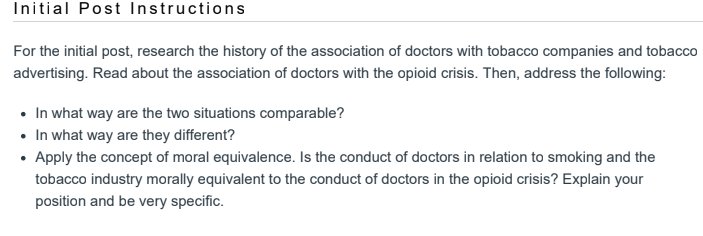
Introduction
The medical profession has a muddled and contradictory association with its approach toward the tobacco industry. While the profession now firmly opposes to smoking and vigorously publicizes the serious, even fatal, health hazards associated with smoking, this was not always so. Advertisements for tobacco products, including cigarettes “… became a ready source of income for numerous medical organizations and journals, including the New England Journal of Medicine and the Journal of the American Medical Association (JAMA), as well as many branches and bulletins of local medical associations” (Wolinsky & Brune, 1994). Physicians and reference to doctors and smoking were once common in tobacco industry advertisements. The story of physicians and promotion of smoking can be found in “The Doctors’ Choice Is America’s Choice” (Gardner & Brandt, 2006).
The role of physicians in the current opioid crisis is now under scrutiny on television (Farmer, 2019) by trade publications (King, 2018), peer-reviewed journals (deShazo, et al, 2018), and by physicians themselves (Hirsch, 2019).
Initial Post Instructions
For the initial post, research the history of the association of doctors with tobacco companies and tobacco advertising. Read about the association of doctors with the opioid crisis. Then, address the following:
- In what way are the two situations comparable?
- In what way are they different?
- Apply the concept of moral equivalence. Is the conduct of doctors in relation to smoking and the tobacco industry morally equivalent to the conduct of doctors in the opioid crisis? Explain your position and be very specific.
ANSWER:
The two ways are similar in that clinicians once advocated for the two substances despite the addictive effects. In the 1950s, tobacco manufacturers confidently used physicians to run their marketing campaigns, hoping to convince the consumers that tobacco was safe to consume. One company even conducted an “independent” study and claimed that most doctors prefer to smoke their brand of cigarettes (Gardner & Brandt, 2006). The inclusion of physicians and such evidence in marketing campaigns created a reassuring image of tobacco smoking safety. Decades later, evidence and physicians have promoted opioids as an effective medication for patients in pain. For instance, morphine is often put into a patient’s IV drip to numb the patient’s pain receptors. There are also pills such as oxycodone that are prescribed to paints in moderate to severe pain. Like with tobacco, the continued prescription and use of opioids in To access full answer, use the purchase button below…
